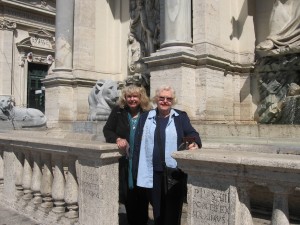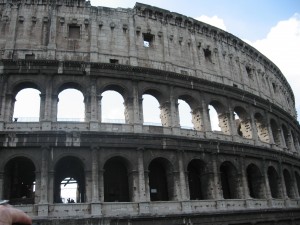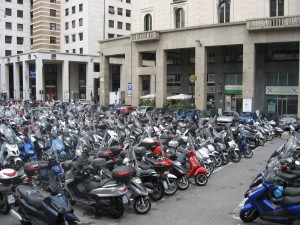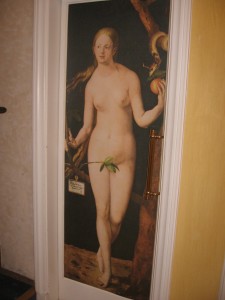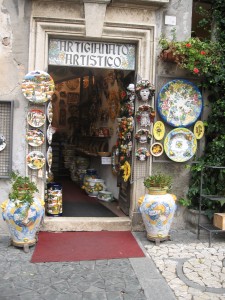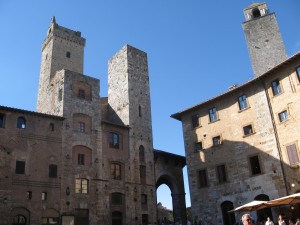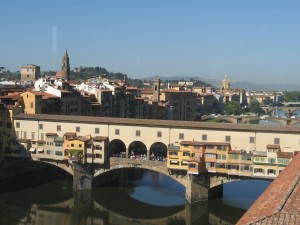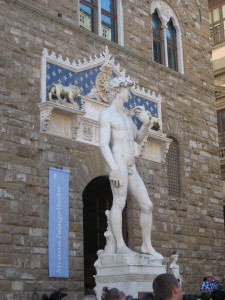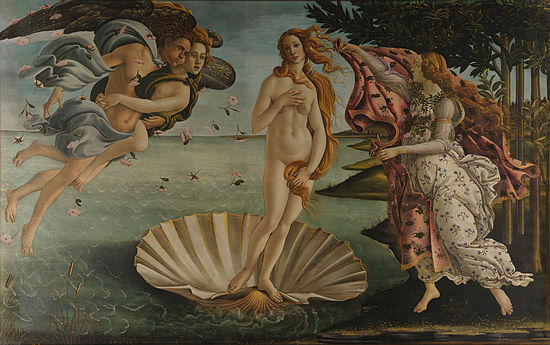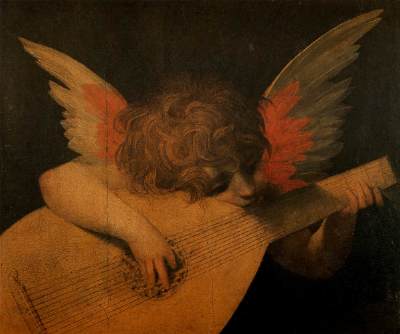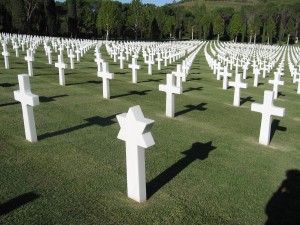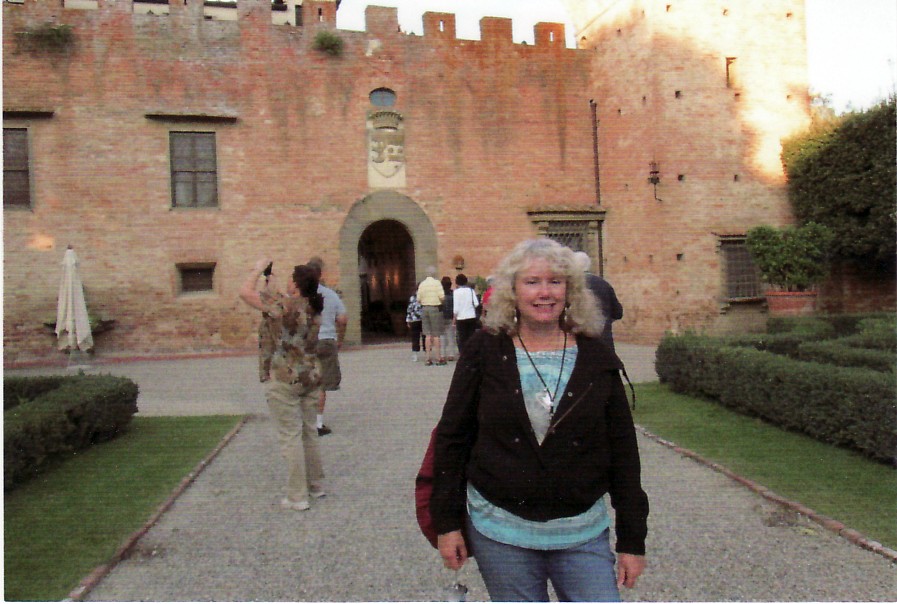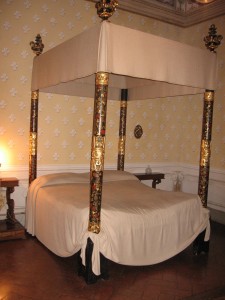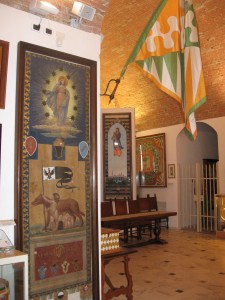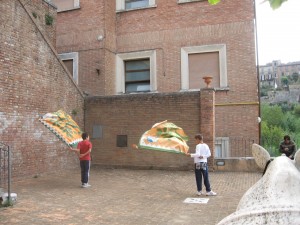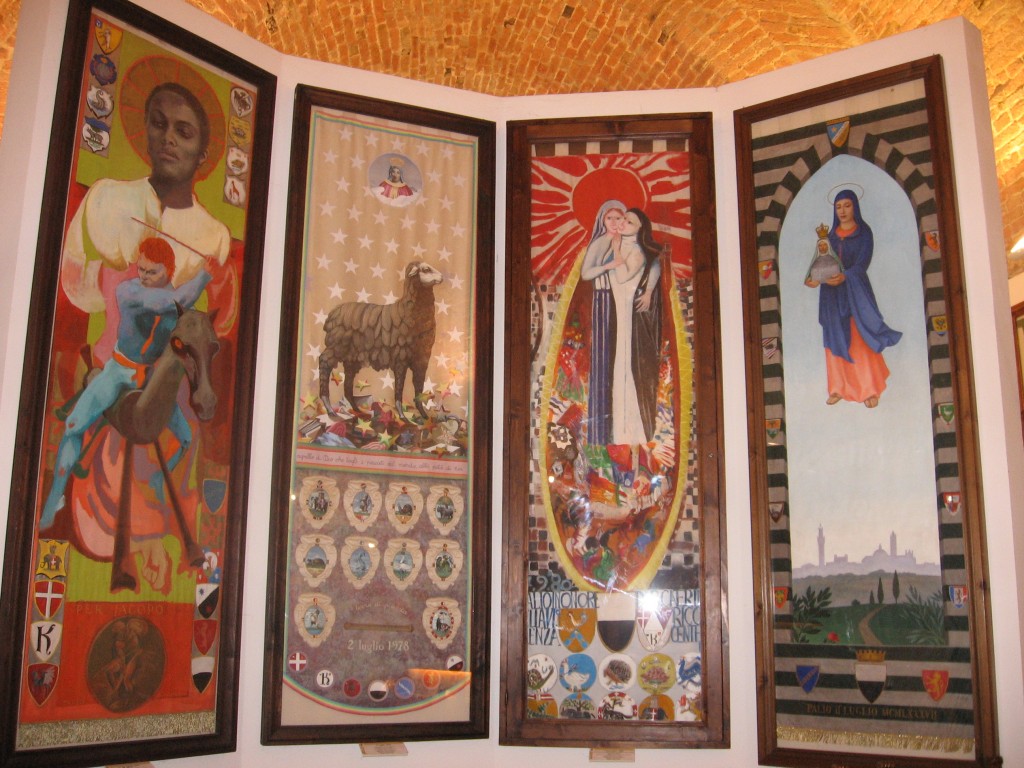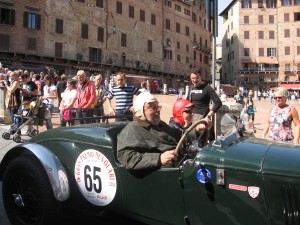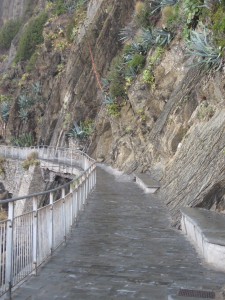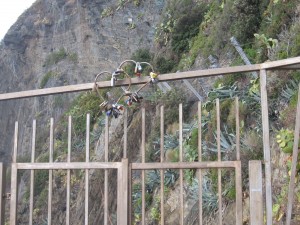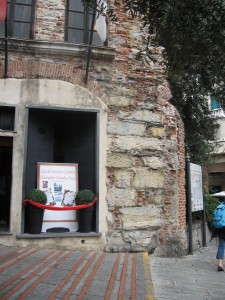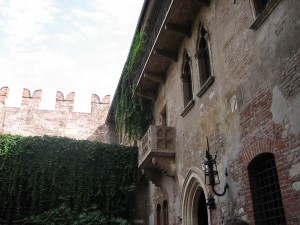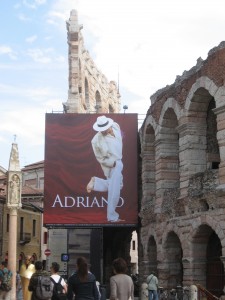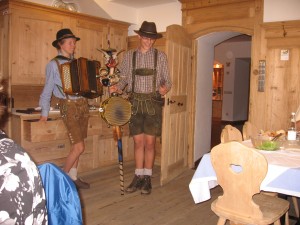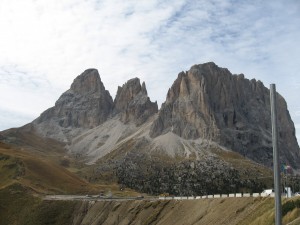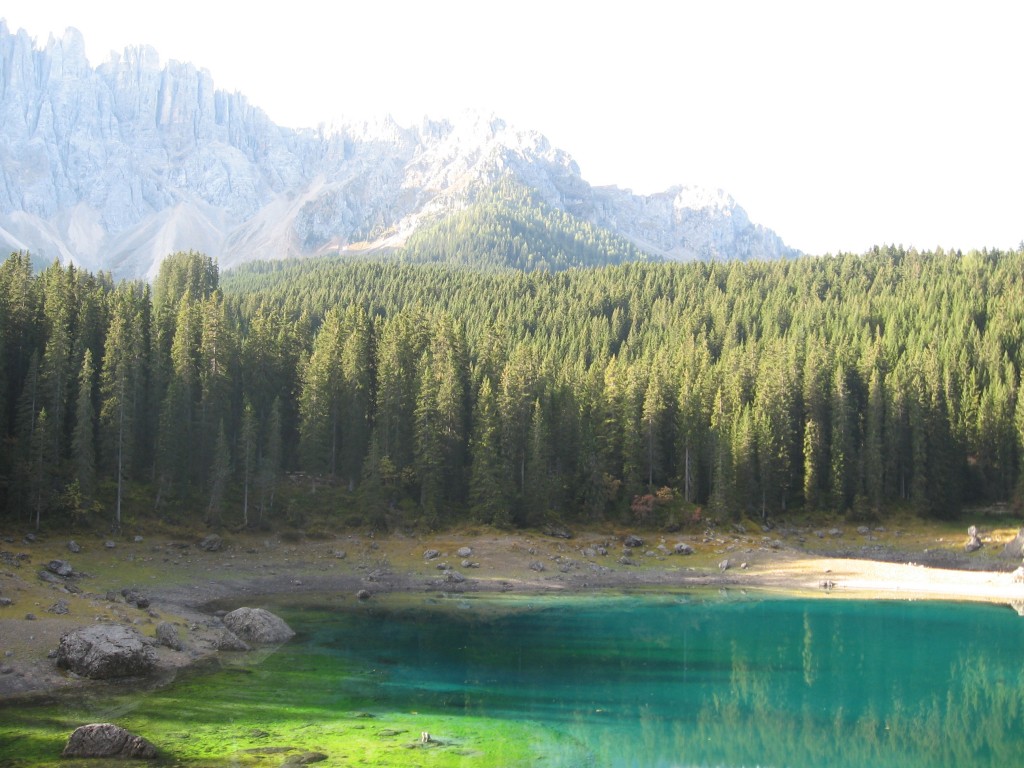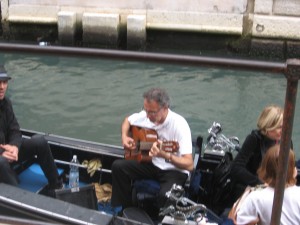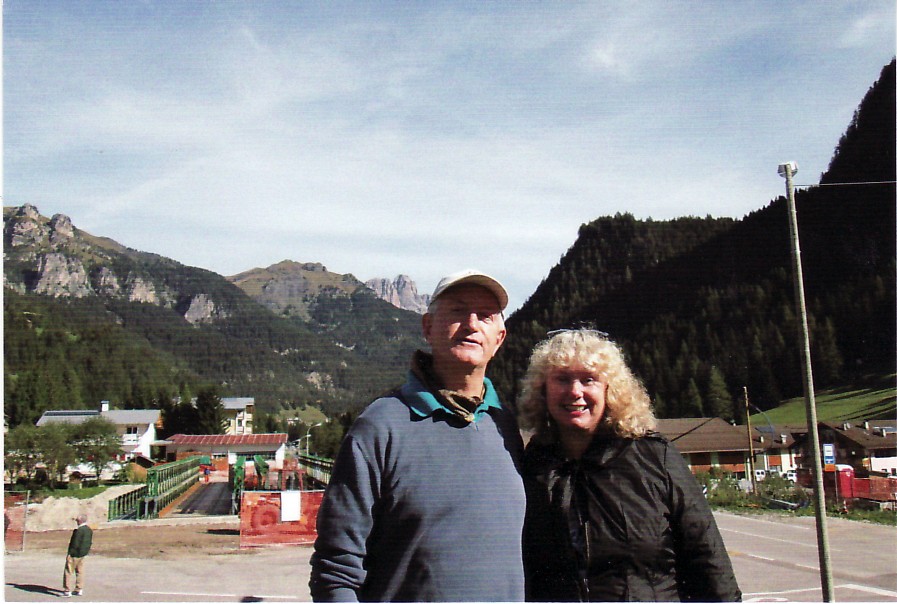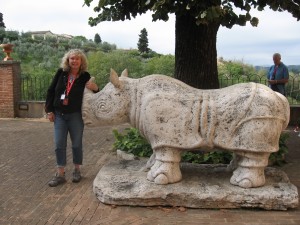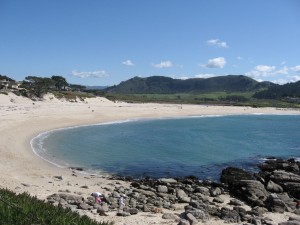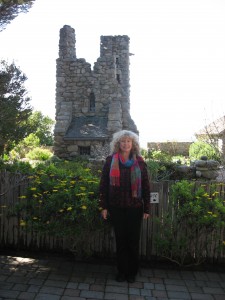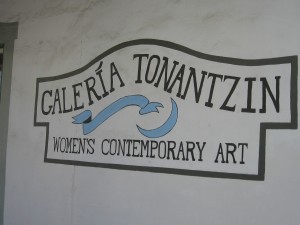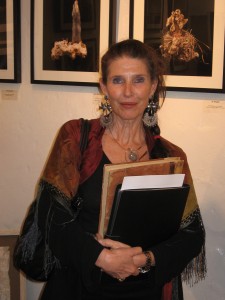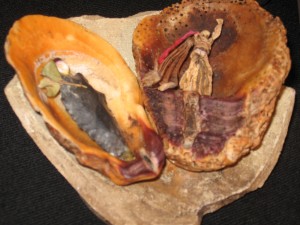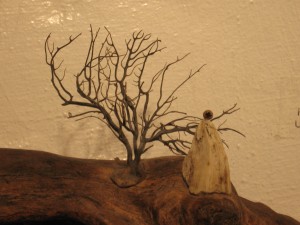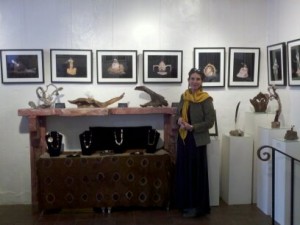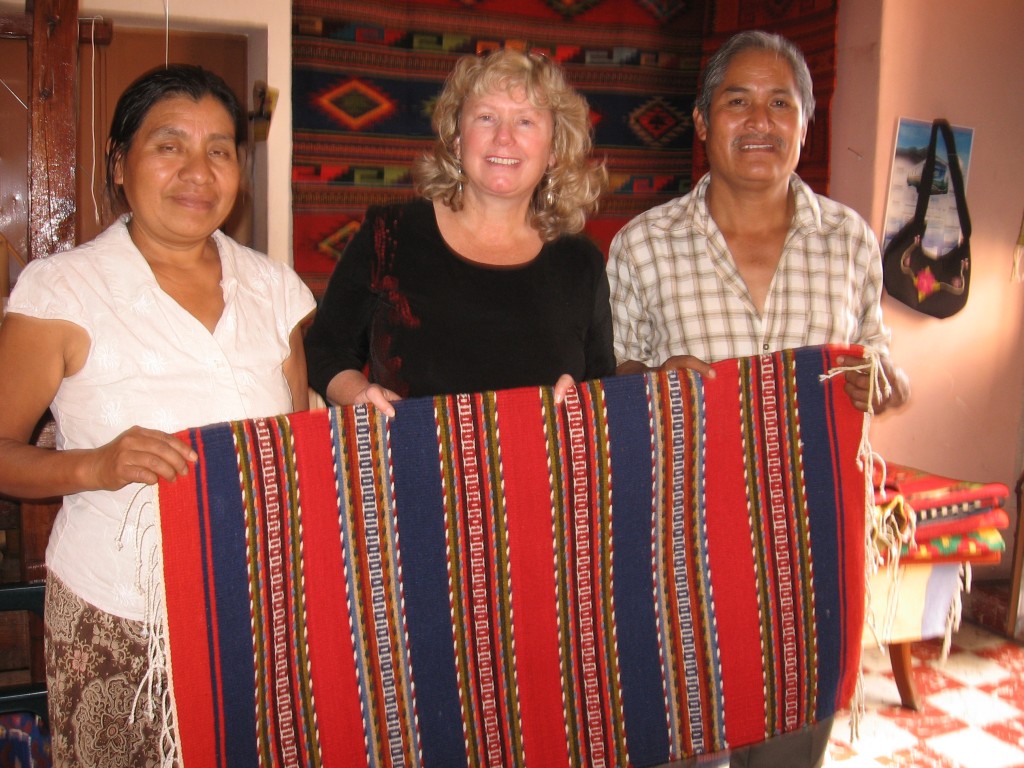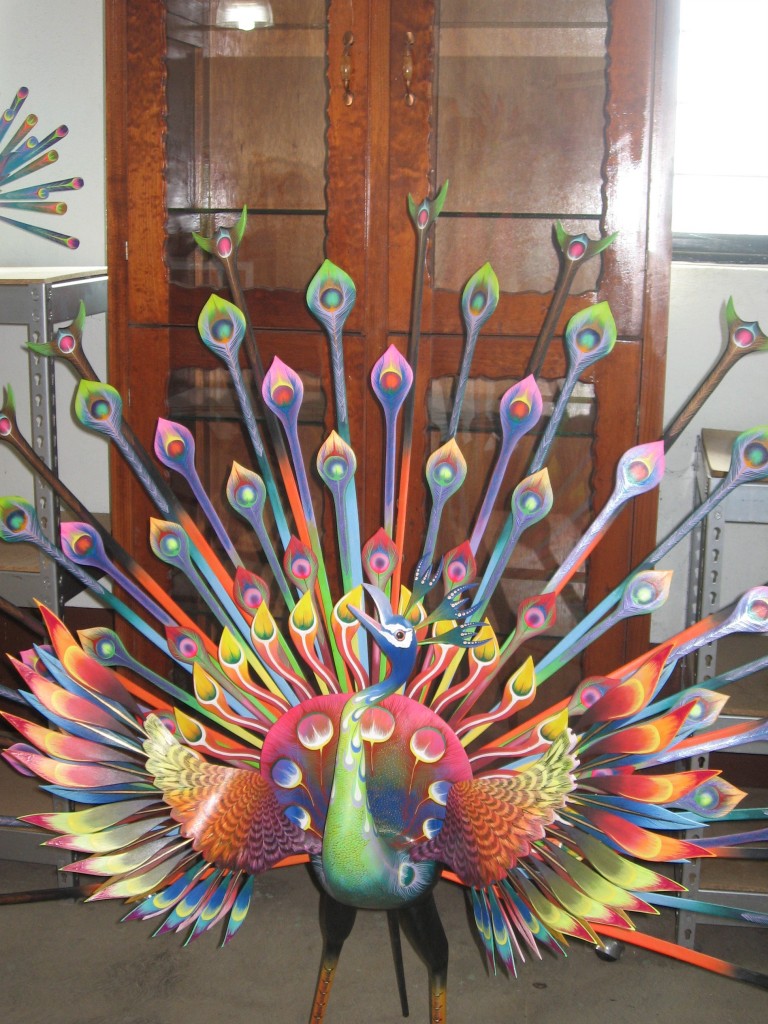Tags
Anna Halprin, Birth of Venus, Bolzano, Botticelli, Carezza, Castle Oliveto, Christopher Columbus, Cinque Terre, Cultural Tourism, Culture, Dayton Ohio, Edward Breen, Edward Focke Breen, Family Relationships, Fiorentino, Florence, Florence American Cemetery and Memorial, Genoa, Gondola, Grand Circle Travel, Italy, John Ferneding, Juliet's balcony, Lucky Eddie, Luigi Arveda, Michelangelo, Mill Valley Film Festival, Musical Angel, Orvieto, Otsi, Painting, Palio, Pisa, Rome, San Gimignano, Sculpture, Siena, Stevie Nicks, The Contrada of the Forest, The Dolomites, The Italian Riviera, The Renaissance, Travel, Tuscany, Uffizi Gallery, UNESCO, Venice, Verona, Via dell' Amore, Walter Bayley, Warren Hellman
“I am still learning.” Michelangelo, age 87.
We travel for many reasons — adventure and renewal among them. Most often the real gift is a change of perspective which I received on a recent two-week tour of Northern Italy with my mother, Milly Hubler, a retired Spanish teacher who has traveled extensively. In many ways her identity has been defined by the places she has visited. Travel is important for those who have the health and resources to do so, especially for those who are older. The stimulation and connection to the wider world that travel provides is a sustaining and reinvigorating experience for those who have the energy and enthusiasm for exploration and learning about other cultures.
Marian Hubler, with Milly Hubler by a fountain in Rome
Having a good tour leader also makes all the difference as we did with Luigi Arveda, on our recent fall trip with Grand Circle Travel to Tuscany, The Italian Riviera and The Alps. In addition to being thoughtful and attentive to all the details, his philosophical bent and sense of humor added greatly to the enjoyment of our time in Italy. Not only did he lead us to so many places, but he always encouraged us to look and to make our own discoveries. “It’s time now,” he always said, “for a Kodak moment.”
We began our journey in Rome. I found it hopelessly tantalizing to be there for all of 24-hours so recommend getting there a few days early to recover from jet lag and to explore this great capital of the world. After arriving and checking in to the Hotel Victoria, we took a whirlwind city tour and from the top deck of the open bus felt like drunken sailors on a spree snapping photos of over eighty major sites. Truly astonishing to see the many architectural and cultural landmarks so thoroughly integrated into this bustling modern city — around one corner, Vatican City and around the next, The Roman Coliseum.
Rome is ever evolving with so many things of enduring beauty created out of the ruins of a different time with its storied past. Walking through the Piazza della Repubblica on our way back, we stopped to visit the first of many astoundingly beautiful cathedrals, the Church of St. Mary of the Angels and Martyrs. One enters through the ancient Roman wall into what was once the great central hall of the baths transformed in the 16th century into a church designed by Michelangelo.
As we walked around the church I noticed many of the women were wearing these transparent butterfly scarves. My curiosity was immediately engaged as the butterfly as a symbol of transformation has appeared in different forms in so many of my life’s journeys. I wondered was I merely experiencing a new Italian style trend? So I stopped to ask two young Italian girls who were wearing the scarves. They told me simply that a man at the entrance was handing them out to cover the bare legs and shoulders of the women in a respectful manner so they could enter the church. An elegant and practical solution to a timeless problem, the sight of so many colorful butterflies in this beautiful cathedral seemed like a positive omen to me.
I quickly learned that the fusion of style and practicality is part of the uniquely Italian approach to life. I noticed so many young attractive girls in Rome, fashionably dressed with high heels driving Vespas, the ubiquitous Italian motorcycle, with their long hair trailing in the wind. All over Italy we would see parking lots full of vespas next to the beautiful churches and historic landmarks.
A sea of Vespas in the port city of Genoa
Soon we were on our way to Florence, leaving our hotel just inside the old Roman walls near the Villa Borghese. I would like to return someday to walk in Rome’s Central Park a stone’s throw away with its beautiful gardens and tall cypress trees surrounding a sumptuous art gallery in a cardinal’s mansion complete with Etruscan Museum. I did not need to throw a coin into the Trevi Fountain to know that I would someday like to come back to Rome to explore… All the main roads in Italy really do lead into Rome as we discovered as we headed out on the Via Campania through beautiful high-walled neighborhoods into the Roman countryside along the Tiber river valley heading north to the region of Umbria and then Tuscany. The Italians have a reputation for being “creative drivers,” as Luigi would say, although a recent points system for traffic violations has done much to keep people calm on the highways.
The door to the ladies bathroom at the Hotel Victoria in Rome
We stopped at Orvieto, a beautiful medieval hillside town just off the highway in Tuscany. A short ride on a funicular and a shuttle bus took us into the main piazza where the imposing Cathedral Duomo’s towering facade set the tone. In the old town, beautiful shops selling brightly painted local ceramics lined the streets, now largely pedestrian walkways. We had a panini for lunch, buying a made-to-order sandwich of fresh mozzarella and tomato to eat and enjoyed it Italian style while wandering and window shopping. Afterwards we tasted the local olive oil from a family-run business savoring its fresh flavor and peppery sharpness.
A ceramics shop in Orvieto
I bought a little cutting board made from the local olive wood and a mezzaluna, a special Italian kitchen dicer in the shape of a half-moon with a curved blade. Now when I chop parsley or garlic, I will think of Italy and remember that It is all about essence, particularly in relation to food. I was surprised to find that even in the Autogrill in the middle of the highways where we stopped on our longer traveling days, one would find chefs making custom dishes like risotto to order — their fast food made from scratch right in front of us and replenished frequently.
Medieval towers in the hill town of San Gimignano
In the center of San Gimignano another enchanting medieval town with fourteen towers, we enjoyed gelato made by an Italian world cup soccer star in the most enticing of deep and unusual flavors. I tried saffron and vin santo gelati, which had the flavor of the sweet dessert “holy wine”. I also learned that the pasta that looks like a bow-tie, in Italy is called farfalle, meaning butterfly wings.
In Florence at the modern Hotel Londra, we stayed a short walk from all the historic and architectural treasures. Our local guide Simone Giovannoni gave a lecture on the art of the renaissance. He told us how during the 1400s the merchants, wealthy through trade, became the bankers of the larger Italian city-states like Florence and Siena. They began to compete with each other to see who could build the most beautiful churches and make the most inspiring art particularly in the realms of architecture, painting and sculpture. The ruins of ancient Rome, still very much visible throughout Italy, have continuously reminded all who live or visit of their glorious past. The artistic renaissance that flowered during this time was a kind of rebirth of the beauty of the earlier classical forms.
The view of the Ponte Vecchio from the Galleria Uffizzi
The next day we had much to think about when we saw Michelangelo’s famous statue of David and his powerfully unfinished Prisoners at the Accademia Museum in Florence. One could see all the emotions the young David was experiencing as he readied himself to kill Goliath — his determination and focus masterfully sculpted into the marble, as he readied his sling and shifted his weight preparing to fire his shot.
Michelangelo’s David
A copy of David in the Piazzo Vecchio in Florence near the Uffizi
As we walked the streets of Florence, we joined the throngs of people marveling at all its architectural wonders. At the Uffizi Gallery, we looked in reverence at the paintings particularly Botticelli’s Birth of Venus, an image that resonates with me, for as a woman I seem to be ever continuing to come into my own.
The Birth of Venus by Botticelli
I also loved Fiorentino’s Musician Angel and its sweetness. In the painting, a young angel with curly hair cradles at close hand a lute-like instrument with a dedication to playing…
Musician Angel by Fiorentino
Ever conscious of these extraordinary accomplishments, I think of our own American culture and how we could benefit from more of a Renaissance outlook. I wonder how we can evolve into a culture that shapes everything we create in its most glorious possible form?
There seems to be a symmetry of beauty throughout Italy. Particularly in the Tuscan countryside where all is harmonious and the loveliness of the landscape cannot be over-described. I felt a deep pull to go back to Tuscany to stay in one place for awhile and to get to know its people. The glorious Tuscan light shines through the grapevines and olive trees which appear to be planted in perfect rows on hillsides among the earth-based colors of the Tuscan farmhouses and agriturismos where guests may stay. With not a billboard or piece of litter to be seen anywhere, our advertising images in the United States seem to be a curious anomaly in comparison.
The Italians also seem to know how to express their appreciation to others. We experienced this directly on a visit to the Florence American Cemetery and Memorial, one of the highlights of our time in Tuscany. The cemetery site was a gift in perpetuity from the government of Italy to the American people for the soldiers who lost their lives during World War II in the Allied campaign liberating Italy. Managed by the American Battle Monuments Commission, outside the memorial is a beautiful sculpture on a tall pillar The Spirit of Peace bearing olive branches as it hovers over the graves of the fallen soldiers. The beauty of the cemetery is astounding with the symmetry of its headstones, Latin crosses and Stars of David laid out in harmonious relationship to the memorial itself.
The symmetry of headstones at the American Cemetery outside of Florence.
One of the amazing things about visiting another country and learning about another culture is the capacity one receives to sift through one’s family stories about that time in a more focused way. Many people know someone who has fought in the military and after that time have visited the country where they were assigned. In this case, I am trying to imagine what it must have been like to have fought as an American soldier during WWII.

Lucky Eddie “The Life, Times, and Family of former U.S. Congressman, Edward G. Breen by Edward Focke Breen www.thelocalhistorycompany.com
A cousin, Edward Focke Breen, wrote a memoir about his father “Lucky Eddie” aka Edward G. Breen, a former U.S. Congressman. He tells stories of all the incredible things that happened to his Dad, then known as Major Breen, when his unit fought in Italy during the war. Amidst the horrors of battle and all the bombardments, one of the more intriguing stories he told was when the King of Italy Victor Emmanuel III gave his father his war-torn limousine when he could no longer care for it. The limo was repaired in an Army yard and a big hit with all the men while the unit was in Naples for seven months. When the unit was ordered to move towards Rome, Eddie Breen was able to leave the limo for the use of his cousin John Ferneding who was arriving in Naples on a Navy ship the next morning. To John’s utter amazement, Eddie left him not only the limo, but two motorcycle escorts and the use of a villa with a fully stocked wine cellar.
Eddie was one of the lucky ones who survived the war and returned to his home in Dayton, Ohio. I remember as a child at family picnics, he would line us all up to march in military parade fashion to the appointed barbecue for our hamburgers.
The author at Castello di Oliveto
One of the things I did during our trip was to completely unplug from my iphone, imac, Facebook, watching the news or reading a newspaper. I was surprised that after a few days of wanting to reach for my phone to check emails, that I did not miss the barrage of messages and enjoyed being present to the lovely times we were having.
For it is not every day that one can have dinner with an Italian family in a 600-year-old Tuscan farmhouse where our hostess was a lively little girl who spoke charming English. Or dine in the open air at the 14th century Castello di Oliveto (Castle of the Olive Grove), now used for special events and cooking classes, where our group had a private wine tasting and multi-course candle-lit dinner. One of Tuscany‘s most beautiful historical residences, I found out that the same King of Italy Vittorio Emanuele III had stayed there along with three popes Leone X, Clemente VII and Paolo III. Before dinner we toured some of the rooms in the castle and saw the bedroom where they slept.
The bed where King Victor Emmanuel III slept
In Italy it seems as if there is always something even more spectacular to see around the next corner. The hill town of Siena is one of those places that takes your breath away with its medieval charm and the astonishing fact that it is a real city with people who engage in its history in an ongoing way. We were fortunate to have a local guide, Mariela, who was a member of one of the districts, or neighborhoods within Siena that has a special club “The Contrada of the Forest” that sponsors a horse, rider and a contingent to participate in the pageant for the Palio, a centuries-old bareback race held every summer in the famous Piazza del Campo.
The clubhouse of La Contrada della Selva
The clubhouse of this particular contrada, dating back to the mid-1500’s, was part chapel, historical museum and gallery of the palios (or banners) won through the years. The morning we visited, we saw a Sienese father coaching his sons in the courtyard with the twirling of the flags that was part of their role in the next pageant.
Young Sienese boys practice with flags for the next Palio
Interestingly, Siena was the first city in Europe to banish auto traffic from its main square and one is ever conscious of its history with the colorful fluttering flags of all its neighborhoods and the narrow streets lined with iron rings to tether its horses. The Palio is held twice a year — July 2 and August 16 — with the contradas of seventeen neighborhoods competing against each other. The winner receives a palio, or hand-painted banner by a local artist featuring the Virgin Mary.
Some of the beautiful palios won by the contrada over hundreds of years
Before the race, the horse is brought into the chapel of each clubhouse to be blessed by the priest. A riderless horse or scosso can win the race if it makes it around the course. During our all too brief time on the Piazza, we saw a wedding party from the Netherlands with a beautiful smiling bride and groom take their first walk across the plaza. As they made their way out of the church onto the main square, they crossed a parade of vintage cars beginning a road-race throughout Italy, a memorable start to their life as a married couple.
Drivers of vintage cars begin their road race in Siena’s main plaza
on to our road trip to The Italian Riviera. Though a wondrous thing to see so many sights, I made a silent vow that I’ll return to spend more time in Tuscany someday. On our way to the Cinque Terre, we stopped at the town of Pisa to see its leaning tower. There we recalled another story told by the late Walter Bayley, the father of Susie Bayley one of my childhood friends from Dayton. Another American soldier in Italy during WWII, he was in a unit that was being fired upon by unknown snipers from the leaning tower of Pisa. They discussed whether they should bomb the tower, but Walt replied that they could not do that to a national treasure. Instead he asked for volunteers to go after the snipers. A small contingent of brave Americans quietly climbed the 294 stairs, killed their adversaries and stilled the shots from the tower.
The leaning tower of Pisa
On to Santa Margarita in Liguria with its changes in landscape from the rolling countryside of Tuscany to the northern Mediterranean where the mountains and steep cliffs drop dramatically into the sea. We stayed in the lovely Hotel Tigullio et de Milan not far from the small port where we took a boat ride on our first afternoon to the neighboring town of Portofino.
The Via dell’ Amore (or Path of Love) closed for restoration
We had hoped to hike the famous path the Via dell’Amore the next day. Our guide Luigi escorted us to the station where we took a train to Vernazza to wander one of the little seaside towns of the Cinque Terre. While in Vernazza, we found out from our local guide in Genoa that there had been a landslide two hours earlier on the path we’d hoped to take. Four women from Australia were taken to the hospital and the trail was closed. So we got back on the train and skipped the town of Manarola going instead to Riomaggiore where we contented ourselves with exploring and looking up at the place where the path ended. Even with the addition of major nets along the hillside above the trail, we learned later on that the trail will be closed for at least a year while they make repairs and decide when it is safe to open again. Will it be my destiny to go back to hike the path another time?
“Love is stronger when ‘two hearts combine’ ” (song lyrics by Robin Laing)
Many of the special places to visit in Italy are UNESCO World Heritage sites. The towns and hiking trails of the Cinque Terre fall into that category along with many of the medieval hill towns in Tuscany. Italy, Mexico, France and Spain are at the top of the list with the most UNESCO sites — a compelling reason to visit any of these countries. We made a side trip to Genoa, the sixth largest city in Italy, to see the birthplace of Christopher Columbus and a replica of his galleon along the waterfront. On the way in, we passed Lord Byron’s rented villa. We saw where the city was bombed during the war and how it is still being repaired.
The birthplace of Christopher Columbus in Genoa
We had lunch in a special restaurant in the town of Reche on the way back where we saw a regional focaccia being made in the kitchen by a young chef who was tossing the dough like a very thin pizza, adding small clumps of a very fresh cheese called crescenza, then layering on another crepe-like pancake before sliding it into a large blazingly hot oven where it was served immediately after being taken out — Just the right therapy for an overcast day along the coast of Liguria.
The next day was our transfer to Bolzano, our gateway for exploring the Italian Alps, the south Tyrolean countryside and the Dolomites. On the way, we stopped in Verona to see Juliet’s balcony. In the small courtyard jammed with tourists, we learned there is a group of kind Italian women who patiently answer letters that are written to Juliet from all over the world asking for advice in how to find love. We were told, just address your letter to “Juliet, Verona, Italy” and you will receive an answer.
Juliet’s balcony in Verona
One of the grandest sites in Verona is the ancient Roman coliseum that is still functioning as one of the largest open-air opera houses in the world and has a celebrated two-month opera festival each summer.
The ancient coliseum in Verona, home of a renowned opera festival
At the Hotel Luna Mondschein (moonshine) in Bolzano, we launched the final phase of our adventure in Northern Italy. The south Tyrol area, formerly part of Austria, was ceded to Italy when Austria lost WWI. Four out of ten residents of this area speak German and the area has an Austrian feeling. Bolzano has a lovely old town with a Dominican Church where we heard an impromptu organ concert. We spent one of our days whisked out of town on the cable car to the lovely village of Renon on a near mountainside where we had tea at Hotel Bemelmans where Sigmund Freud celebrated his silver wedding anniversary in 1913. At dinner at the Wunder Gasthof Restaurant in Ritten, we were serenaded by two young Tyrolean musicians.
Musicians in the South Tyrol play traditional instruments (accordeon and hand-made percussion stick called a diablo or devil’s violin) passed down from generation to generation
At the South Tyrol Museum of Archeology the next morning, we discovered Otzi, the Ice Age man who was found by some German hikers on the Italian/Austrian border in 1991. When he was excavated out of the glacier with his Bronze Age hatchet nearby, they realized they had found a 5,300 year-old frozen mummy who was almost perfectly preserved with his clothing and tools in excellent condition.
Going up to the Dolomites the next day. we took the cable car from Passo Pordoi to the top of these strangely formed pale mountains of limestone and carbonate. I looked at the glacier across from us and remarked, that must be Otzi’s bedroom… At last I thought, a place where someone famous perhaps “slept” that is not marked as such?! Must return to find the exact spot where he was found which undoubtedly has a sign…
Beyond The Dolomites lies Otzi’s bedroom
Outside the oldest hotel in Innsbruck is a sign, John Glenn was among the last to sleep here, will you be the next?!
The mountainside and ski country leading up to the Dolomites was beautiful and pristine. We saw hang-gliders among the mountain tops and bungee jumpers from the Europa Bridge in the Brenner Pass outside of Innsbruck. The ski trails were beautifully designed, some of them winding under the roads so skiers could then pick up lifts on the other side. On our way up we stopped for a hike around a small exquisitely beautiful mountain lake called Carezza.
The Lake Carezza, home of the enchantress
The legend was that this gem of a mirrored lake is said to be inhabited by a mermaid, enchantress or incantatrix. She refused a wizard who was in love with her. In his fury, he threw his rainbow into the lake so now everything is reflected back for all eternity. This beautiful place is said to have inspired music, art and literature for centuries. Leading to the lake is a pedestrian tunnel lined with a vertical marimba-like instrument made of the local red fir wood from the Rosengarten Dolomites where it is possible to play a song. I found out later from Luigi that this wood is prized for the making of very special sounding violins and other instruments.
In Venice before heading out, we made our way to the Hotel Continental by vaporetto, a large water taxi. We enjoyed a walk around the town watching all the gondoliers on their boats in a kind of open-air theatre entertaining their passengers in the canals. I spotted a few musicians on board some of the gondolas, even an acoustic finger-style guitarist.
An acoustic finger-style guitar player entertains on a gondola
We spent some time in St. Mark’s Square where a chamber orchestra played for the cafe-goers. The town has a festive feel with its crowds of tourists and canals everywhere. Our trip to the Venice airport was dramatic as we departed in the dark early morning hours to the dock. A small water taxi with our luggage perched precariously on the bow took as to the airport as we huddled in the stern waving goodbye to our ever-accommodating guide Luigi who was there to see us off.
Guide Luigi Arveda with Marian Hubler in The Dolomites
After experiencing northern Italy, it is impossible not to fall in love and to want to go back — to see the southern part of the country, to stay longer and get to know every region of this enchanting country. On Stevie Nicks new CD In Your Dreams, her song Italian Summer talks about falling in love during a rainstorm at the end of an Italian summer… Love is everywhere, You just had to fall… Her film Stevie Nicks: In Your Dreams is a modern renaissance project in and of itself as it gives an inside look at her creative process as well as a road map for the next generation in how to engage in creative collaboration.
Since my return, I have realized a new appreciation for Italian culture of all kinds. At the recent 2012 Mill Valley Film Festival the film Italy Love It or Leave It speaks of Italy’s challenges as a modern country with many of the same problems — corrupt politics, pollution, poverty & unemployment — that are facing nations throughout the world. Seeing the film-makers’ interviews with people throughout the country who are working to change things for the better gives me hope that Italy can retain its spontaneous essence and charm.
The author with a rhinoceros from the courtyard of the contrada in Siena
I have noticed here in the San Francisco Bay Area there are some modern Renaissance men, as well as women, like the late Warren Hellman, wealthy financier and banjo player who created and endowed a wonderful annual music festival Hardly Strictly Bluegrass held in San Francisco’s Golden Gate Park each October for three days. Or the pioneering dancer and movement therapist Anna Halprin, whose Tamalpa Institute trains dance educators from all over the world in her therapeutic life-work process.
I wonder how more people in our contemporary time who excel at doing a number of things well might be inspired by those who lived during the Renaissance to leave a lasting legacy benefiting mankind?
The Gothic cathedral in Siena, home of the beautiful Pinturicchio frescoes in its library
For Future Exploration
Grand Circle Travel has a Grand Circle Foundation: Giving back to the world we travel that supports cultural and humanitarian projects in countries throughout the world where it organizes tours.
Restoration is a beautifully written novel by Olaf Olafsson about the ethical dilemmas of the residents of an Italian villa during WWII as the Allied forces meet the Germans on the front-line in Tuscany…
Text and photos by Marian Hubler, Copyright October 2012 All rights reserved. Images of Birth of Venus, Musician Angel & Lucky Eddie book cover from open source. For permission to reprint, or to be added to the blog email list, contact the author marian@marianhubler.com

